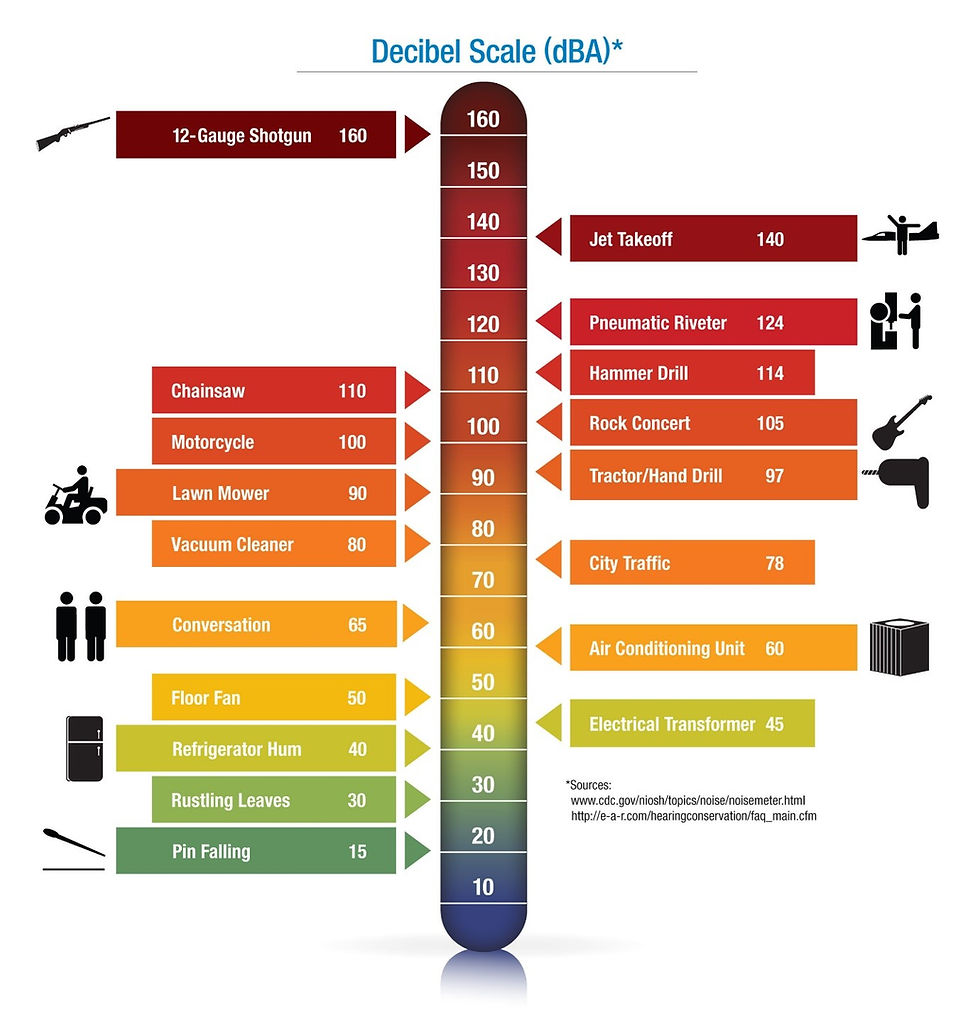Understanding the science of noise
- Stuart Clough
- Aug 11, 2021
- 2 min read
Noise is an immensely complex science. And presenting noise information in a simple way will always result in uncertainties. At NoiseNet, we are trying our best to present simple information that will allow our users to be able to appreciate the impact of noise on their living environment. It will not be perfect, but we also don't want to over-complicate.
Some fascinating facts about noise:
Noise is a wave of air pressure.
Noise is measured in Decibels (dB) - it is a logarithmic scale. An increase of 3dB represents doubling of the noise energy.
The human ear can only discern variation in noise between 3-5 dB (so it is not very precise, but operates in a Mega range - between 15 dB and 150 dB - which is between 1 and 35 000 000 000 000 times in terms of noise energy.
0dB only exists in a complete vacuum. Most people would consider 30 dB as silence.
More than hours at an Energy Weighted average of 85 dB is enough to create hearing loss over the longer term.
The perception of noise nuisance is often the difference between background noise and a peak noise. I.e. a plane flying over a house in a quiet area may cause more disruption than a plane flying over a house in a noisier area.
The dBA scale has been developed to measure noise impact on the human ear (it focusses on frequencies that affect the ear and ignores those with no impact).
The diagram above shows the typical noise levels for different sound sources. Any noise reading must come with 2 pieces of information, the noise level and the distance at which that level was recorded. Noise decreases with the square of distance - so aircraft, gunshots, sirens etc are Extremely loud up-close, which permits those noises to travel long distances.
NoiseNet is focussed on 'recipient noise', or understanding what you will hear in your house (or workplace). This is a product of the source of the noise(s), the distance, any noise insulation in-between. But our objective is to allow you as our customer to understand relative noise simply, and to use that to make better decisions.




Comments